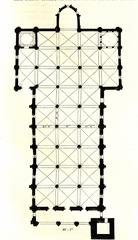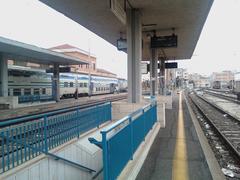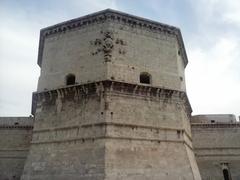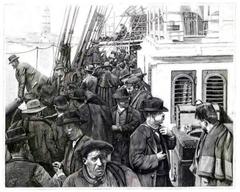Church of the Holy Japanese Martyrs: Visiting Hours, Tickets, and Guide to Civitavecchia’s Historical Gem
Date: 04/07/2025
Introduction
Nestled in the port city of Civitavecchia, Italy, the Church of the Holy Japanese Martyrs (Chiesa dei Santi Martiri Giapponesi) stands as a unique monument to cross-cultural faith, commemorating the 26 Japanese Christians martyred in Nagasaki in 1597. Built in the 19th century, the church represents a fusion of Italian ecclesiastical architecture and Japanese artistic influence, serving as a vibrant site of spiritual pilgrimage, artistic admiration, and intercultural dialogue. This comprehensive guide outlines the church’s history, cultural significance, visiting hours, ticket information, accessibility, and tips for experiencing one of Civitavecchia’s most fascinating historical sites (Comune di Civitavecchia, Port Mobility Civitavecchia, Vatican News).
Table of Contents
- Introduction
- Historical Background: Christianity in Japan and the Martyrs of Nagasaki
- Foundation and Intercultural Legacy
- Architecture and Art
- Restoration and Preservation
- Visitor Information
- Annual Events and Pilgrimage
- Frequently Asked Questions (FAQ)
- Summary and Recommendations
- References
Historical Background: Christianity in Japan and the Martyrs of Nagasaki
Christianity reached Japan in 1549 through the missionary work of St. Francis Xavier and rapidly spread, with an estimated 300,000 converts by the late 16th century (Britannica). However, the Tokugawa shogunate initiated severe persecution, culminating in the crucifixion of 26 Christians in Nagasaki on February 5, 1597 (Catholic News Agency). These martyrs, canonized in 1862, became an enduring symbol of faith and sacrifice.
Foundation and Intercultural Legacy
The Church of the Holy Japanese Martyrs was conceived in the mid-19th century and completed in 1864, as a memorial to the Nagasaki martyrs. Established under the Franciscan Order, the church became one of the first European sanctuaries dedicated to Japanese Christian martyrs (Vatican News, Comune di Civitavecchia). Its foundation coincided with Japan’s Meiji Restoration, symbolizing a renewal of Catholic missionary zeal and a growing relationship between Italy and Japan (Japan-Italy Relations).
The church continues to foster Italian-Japanese ties, hosting annual commemorations on February 5th and welcoming delegations from Japan (Diocese of Civitavecchia-Tarquinia).
Architecture and Art
Architectural Design
Situated at Largo San Francesco d’Assisi, a short walk from Civitavecchia’s port and railway station, the church’s neoclassical façade is complemented by a masonry ramp for accessibility (Port Mobility Civitavecchia, Love Civitavecchia). The exterior opens onto a small square featuring a statue of Saint Francis of Assisi, emphasizing its Franciscan heritage.
Inside, the basilica layout offers a central nave with side aisles, a spacious interior with high ceilings, and natural light creating a reverent atmosphere. The apse and side chapels serve as focal points for art and devotion.
Artistic Features
The church’s interior is adorned with frescoes and mosaics by Japanese artist Luca Hasegawa, also known as Lucas Segawa (Port of Rome). Key highlights include:
- Main Apse Fresco: Madonna flanked by St. Francis Xavier and St. Francis of Assisi, honoring both the church’s Franciscan roots and its Japanese dedication (Port Mobility Civitavecchia).
- Side Frescoes: Depictions of Santa Fermina, Civitavecchia’s patroness, and Hasekura Tsunenaga, the first Japanese ambassador to the city in 1615 (Port of Rome).
- Six Side Altars: Paintings by Hasegawa featuring key saints, including St. Peter, St. Paul, St. Joseph with the Child Jesus, and St. Francis of Assisi.
- Notable Chapels: Dedicated to the Virgin Mary and the Sacred Heart of Jesus, with additional paintings such as St. Anthony of Padua with the Child Jesus.
- Martyrdom Scene: A dramatic fresco depicting the execution of the 26 martyrs in Nagasaki.
Cross-Cultural Elements
Hasegawa’s art integrates Japanese artistic methods and iconography. The church features stained glass and frescoes with Japanese saints in traditional attire, symbolizing the enduring connection between Civitavecchia and Japan (Port Mobility Civitavecchia).
Restoration and Preservation
Damaged during World War II, the church underwent significant restoration in the 1950s, enhancing the original artworks and preserving its Franciscan and Japanese heritage (Comune di Civitavecchia, Shuttle Direct). Restoration efforts focused on maintaining the vibrancy and integrity of Hasegawa’s frescoes and the church’s unique architectural features.
Visitor Information
Hours and Admission
- Opening Hours: Generally open Tuesday through Sunday, 9:00 AM–6:00 PM. Closed on Mondays and public holidays. During special religious events, hours may be extended.
- Entry: Admission is free. Donations are welcome to support conservation.
Accessibility
- Mobility: The church is wheelchair accessible, featuring a masonry ramp at the entrance. Assistance can be arranged with advance notice (Love Civitavecchia).
- Facilities: Seating and restrooms are available; benches and shaded areas are located in the church square.
Guided Tours
- Availability: Guided tours are offered in Italian, English, and Japanese, and can be booked through local tourism offices or the parish (Civitavecchia Turismo).
- Self-Guided Visits: Multilingual information is available at the I.A.T. Tourist Information Office (Viale Garibaldi, 42).
Travel Tips
- Best Times: Early morning or late afternoon for a peaceful experience. Midday is busier, especially on cruise ship days.
- Dress Code: Modest attire is required. Shoulders and knees should be covered. Hats should be removed inside.
- Photography: Permitted, but be discreet and avoid flash during services.
- Language: Italian is spoken locally; English is also common in tourist areas.
Nearby Attractions
- Civitavecchia Cathedral (Cathedral of Saint Francis of Assisi): Baroque architecture and religious art.
- Fortezza Michelangelo: Renaissance fortress.
- Vanvitelli Fountain, Porta Livorno, Piazza Leandra: Historic city sites.
- Church of the Star: Medieval church near Piazza Leandra.
For more, consult the Civitavecchia City Guide.
Annual Events and Pilgrimage
The church is a focal point for the Feast of the 26 Martyrs on February 5th, featuring special Masses, processions, and cultural events often involving Japanese delegations (Diocese of Civitavecchia-Tarquinia). During the Jubilee Year 2025, it will be a key stop on pilgrimage routes (Port Mobility Civitavecchia).
Frequently Asked Questions (FAQ)
Q: What are the visiting hours of the Church of the Holy Japanese Martyrs?
A: Typically open Tuesday–Sunday, 9:00 AM–6:00 PM; closed Mondays and public holidays. Hours may vary for special events—check locally or online.
Q: Is there an admission fee or need for tickets?
A: Admission is free; guided tours may require a small fee.
Q: Are guided tours available?
A: Yes, in Italian, English, and Japanese. Contact the parish or tourism office for details.
Q: Is the church accessible for visitors with disabilities?
A: Yes, the entrance ramp and single-level interior accommodate wheelchairs and mobility needs.
Q: How do I get to the church from Rome?
A: Take a direct train from Roma Termini or Trastevere to Civitavecchia; the church is a short walk from the station.
Summary and Recommendations
The Church of the Holy Japanese Martyrs is not only a spiritual sanctuary but also a testament to the enduring bond between Italy and Japan. Its neoclassical architecture, the remarkable frescoes of Luca Hasegawa, and ongoing role in community and international commemoration make it a must-visit site for pilgrims, tourists, and history enthusiasts. Visitors are encouraged to attend guided tours, experience the annual February 5th celebrations, and explore the surrounding landmarks of Civitavecchia. Always check official websites for the latest updates on hours and events.
References
- Comune di Civitavecchia (https://www.comune.civitavecchia.rm.it/)
- Vatican News (https://www.vaticannews.va/en/church/news/2019-11/japanese-martyrs-nagasaki-history.html)
- Port Mobility Civitavecchia (https://civitavecchia.portmobility.it/en/church-holy-japanese-martyrs)
- Diocese of Civitavecchia-Tarquinia (https://www.diocesicivitavecchia.it/)
- Civitavecchia Turismo (https://www.civitavecchiaturismo.it/)
- Embassy of Japan in Italy (https://www.it.emb-japan.go.jp/itpr_en/italy_japan_relations.html)
- Renato Prosciutto (https://renatoprosciutto.com/civitavecchia-city-guide/)





